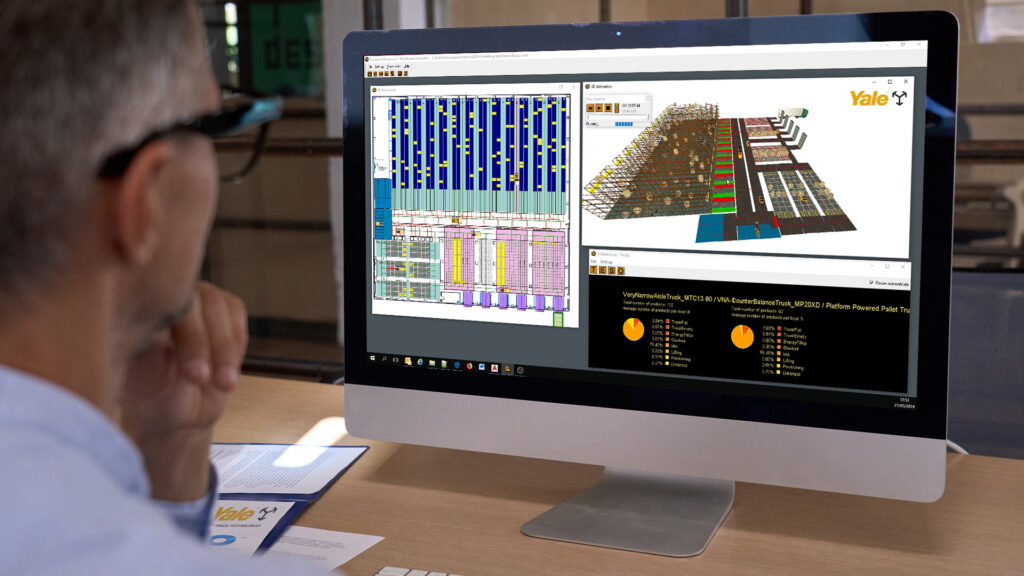Visualisation adds Value to Warehouse Scenario Planning
24th October 2023

Intralogistics operations could better manage unexpected changes in the warehouse by using visualisation and simulation tools for scenario planning, suggests Yale Lift Truck Technologies.
“The warehousing industry is constantly changing,” says Ron Farr, Director, Warehouse Sales – EMEA for Yale Lift Truck Technologies. “Businesses in industries such as retail, e-commerce, 3PL, food, and beverage, not only need to specify a fleet that works for them right now, but also consider how that equipment might adapt with them in the future.”
Efficient flowthrough and efficient use of site storage are vital in intralogistics. So, to support warehouse applications, data driven simulation and up to date visualisation solutions are available now from Yale and its global network of independent local dealers.
The Yale Warehouse Simulator is bespoke software that allows us to design different warehouse layout options based on real world situations. It uses complex mathematical calculations to provide statistics on fleet performance and efficiency, based on various scenarios.
“Growth within a business is a positive change, but one consequence is that it can lead to inefficient and poorly thought-out materials handling operations,” Ron explains. “If the economy then changes for the worse, how can a business know what to change to become more productive in the warehouse? Or how it may impact other parts of the business. It helps to look at the layout in detail to understand how high they need to go, where to put racking, what configuration of trucks is right, and whether they need a VNA or a Reach Truck, for example.”
The Yale Warehouse Simulator allows experimentation with different layouts, equipment configurations and timings, in 2D and 3D, with data analysis. This can support scenario planning to help businesses to be as prepared as possible for unknown warehouse changes.
A simulation model is created based on the real world, including detail such as which different trucks could be used to perform certain tasks, maintenance rates, how various parts of the warehouse perform, numbers of pallets, possible areas of congestion in staging lanes, or numbers of lorries used in order to optimise flow and productivity. This enables Yale and its dealers to advise the optimum mix of Yale equipment to meet the warehouse’s needs.
“The issue with spreadsheet techniques and some simulation software is that it’s inflexible, and often doesn’t make calculations based around interaction between equipment, such as traffic.” Ron Farr adds. “What’s great about the Yale Warehouse Simulator is that it allows us to explore different options and help businesses move into the future with confidence.”
“Nothing is static in the intralogistics industry, and that impacts how you arrange and organise your warehouse,” explains Ron. “These solutions from Yale help operations to better plan for now, and for the future, by exploring different scenarios. It’s just one of the ways that Yale and our dealers can be there to closely support businesses as warehouses evolve.”

